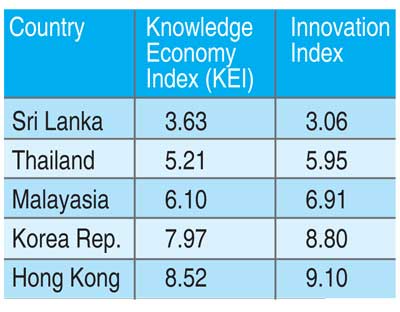Reply To:
Name - Reply Comment
 The situation in Kandy shamefully took a deeper communal turn after the attacks on the religious sites and shops in the Digana and Teldeniya areas in Kandy. After 30 years of war, we, Sri Lankans, have still not learnt that we should never exploit, initiate, indulge, promote or tolerate any kind of racist, religious and nationalist divisions.
The situation in Kandy shamefully took a deeper communal turn after the attacks on the religious sites and shops in the Digana and Teldeniya areas in Kandy. After 30 years of war, we, Sri Lankans, have still not learnt that we should never exploit, initiate, indulge, promote or tolerate any kind of racist, religious and nationalist divisions.

Speaking at the cabinet news briefing this week, Minister Rajitha Senaratne said certain politicians are behind the disturbances in Kandy. Shocking to say the least and acts of this nature will only continue to hold us back from realizing our full potential as a nation.
Perhaps this is why some nations like Japan, China and Singapore continue become wealthy and prosperous, while others remain stuck in poverty, wars and conflict – and also, some of those powers, from ancient Rome to modern Soviet Union, prosper for periods and then collapse.
Politics and leadership make the difference, say economists Daron Acemoglu of MIT and James Robinson of Harvard University in their book, ‘Why Nations Fail’. Countries that have what they call “inclusive” political governments — those extending political and property rights as broadly as possible, while enforcing laws, policy and providing stable public infrastructure — experience the greatest growth over the long run.
By contrast, Acemoglu and Robinson assert, countries with “extractive” political systems — in which power is wielded by a small elite and family— either fail to grow broadly or wither away after short bursts of economic expansion.
Politics
Many years ago, as university students, we were taught that natural resources matter more than political leadership. Later they argued the political leadership is the key for sustainable economic performance. Some countries at that time demonstrated that good geography could trump bad politics and the best politics require a top effort to offset bad geography.
At the same time, they argued that rich countries were in the north of the globe and most poor countries are in the south but Australia and New Zealand are part of the southern hemisphere and both are doing fine. You couldn’t say this of Papua New Guinea, which is the Asian country closest to Australia and New Zealand.
Later on, people like Michael Porter argued that it was not geography alone that causes wealth or poverty. A superficial view is to blame racial differences. Black Africa is the poorest and most disordered part of the world and Haiti, with an almost entirely black population, is the poorest country of the Americas. But the coincidence is accidental.
What makes some countries rich and others prone to poverty is not related to skin colour or racial factors. Many immigrants from poor nations do very well in the US and Canada, though one has to admit that both countries make immigration easy only for the best and the brightest of those who hail from the Third World countries.
It is also not the presence or lack of natural resources what makes a country rich or poor in the long run. Japan is a country with very limited natural resources but has been the richest country in Asia for a long time.
Natural resources 
On the other hand, it is easy to predict that some Third World countries that currently are rich because of immense reserves of natural wealth while not being burdened with large populations will slide back when the natural resources are depleted.
While a handful of countries thanks to great leadership managed to achieve economic prosperity that has helped them to escape the perils of poverty, while many other countries fail in this respect and continue to be trapped in poverty. Was it chance? Their people? Their products and services? Their markets?
The growth experiences of countries from north to south as we all know is filled with success and a great deal of disasters, which has had huge implications for the living standards of ordinary people. Then countries with “extractive” political systems — in which power is wielded by a small elite — either fail to grow broadly or wither away after short bursts of economic expansion.
Drivers of prosperity
Economics has sometimes a narrow scope. It studies a nation’s prosperity through trade flows, monetary, fiscal and budget policies. The analysis of companies is a bit broader. It encompasses strategy, structure and finance but also less “rational” fields such as human resources, corporate culture or consumer behaviours.
Competitiveness provides a broader basis for analysis. It looks at all the elements that can explain the success of a nation. Industries often thrive when they are forced to overcome high labour costs or lack natural resources. When their customers won’t accept inferior, outdated products, when their local competitors are “murderous” and when the government offers no protection from their competition and sets tough technical and regularity standards.
For instance, the Italian shoe industry is prodded by sophisticated consumer demand that encourages entry by many new firms. Many of them, family-owned, compete very jealousy. The shoemakers are compelled to spew out new models continuously and must keep improving to increase efficiency to stay competitive within Italy’s quirky, high-cost infrastructure.
When the home market got saturated, the Italian manufacturers went overseas and achieved international success. According to Prof. Porter, competitive advantage based on only one or two factors is unsustainable. South Korea’s construction industry grew rapidly during the mid ‘80s simply by applying low-cost labour to projects that did not require sophisticated engineering.
It lost out when other countries that had cheap labour jumped in. Resources-based advantages too frequently suffer the same fate. Two additional variables, ‘chance’ and ‘government’, have a big impact. Chance is outside the control of industries; wars and embargoes can reshape the industry structure in a country for or against it.
A government can improve or retard competitive advantage. Vigorous enforcement of antitrust laws encourages competition and stimulates innovation. For an industry to flourish, domestic rivalry is nearly always necessary. It drives companies to move beyond whatever initial advantage that led to the founding of the industry and to develop their international potential.
Strong leadership
To maintain competitive advantage, a nation must normally broaden and upgrade from their original sources of success and take it to the next level. In the early stage of economic growth many believe that a country needs a strong government that can mobilize and direct resources that are important.
Therefore, the success of poor countries, according to them, hinges critically on the quality of government leadership, i.e. its development-oriented leadership, its ability to promote good talent to head critical institutions and its approach for policy formulation with industry.
China is a case in point. On the other hand, India, even though is poor in resource, is super rich in human talent and in technology. Knowledge is perhaps the most critical competitiveness factor. As countries move up, it is knowledge that will ensure their prosperity and help them to compete in world markets.
How that knowledge is acquired and managed is each nation’s responsibility and will determine a nation’s future prosperity. But the key enabler for all this is sound political leadership. Lack of sound political leadership impedes on growth because it creates uncertainty and this discourages investment and foreign direct investment as well as affecting employment creation.
(Dinesh Weerakkody is a thought leader)